Being organized is about more than just your home. You can also order your mind, relationships, finances, and your schedule. But if you want to organize your life, you need to focus on a few select areas and categories.
When I became a mom, I had a really hard time adjusting. You see, motherhood isn’t always as easy as everyone makes it out to be. There’s suddenly an army of little ones messing everything up. 😂 But more than that, your mindset shifts and your priorities change. You spend all your energy making sure your kids are well-fed and well-rested. Before you know it, your life and home are in shambles.
I was what they call, a hot mess. There were piles of stuff in every corner of my home, I was late everywhere I went if I even remembered to show up at all. I had trouble keeping up with our home and the everyday chaos. And I couldn’t remember a thing to save my life, which resulted in multiple trips to the store on a daily basis.
My disorganized life left me feeling miserable, frustrated, and angry.
After my 3rd child in 4 years, I knew I had to change my ways. So for the next 6 months, I read everything I could find on home organization, personal development, motivation, and habit.
After quite a bit of trial and error, I learned which steps were worth the effort and which steps were a waste of time. And I’m hoping to save you the trouble! After reading this post, you will know exactly what to focus on so you can start working towards organizing your life. Here are the 11 steps that made all the difference…
ORGANIZE 5 CLUTTERED HOT SPOTS OVER 5 DAYS
The free 5-Day Winter Declutter Party is back so you can clean up your home before spring. Click below to register for free. 👇
#1 – FOLLOW A ROUTINE
Following a routine is a great place to start when you want to organize your life!
Aside from eliminating your need to plan, a routine also reduces your need to make decisions. Knowing what you need to do from one day to the next makes it easy to manage the daily chaos.
When it comes to a routine, you have a couple of different options. I’ll break them down below.
Daily routine
By doing the same things at the same time of day, you become more efficient. When you finish one task, you can move directly to the next without having to stop, think, decide, and plan.
I believe everyone should follow a daily routine, especially if you have kids. If you’ve never stuck to a routine before, it can be kind of hard to get into the groove at first. But with time, it will be like second nature.
To get started, think about what you want to accomplish at each time of day. Plan out your ideal day on a blank sheet of paper and then use that outline to remind you of what you need to do and when.
Be sure to allow room for improvement. If something isn’t working, don’t be afraid to tweak it and change it until it works for you.
Weekly routine
A weekly routine is when you do the same things on the same days of the week.
For example, I always pay bills on Fridays and go grocery shopping on Saturdays. Sundays are for resetting my house, reviewing, and planning. Mondays are for meal prep. I don’t really prep specific meals; I usually just wash and chop veggies and cook some meat for the week. And Tuesdays, Wednesdays, and Thursdays are for cleaning tasks.
Following this routine during the week means that each task will get done eventually! I don’t stress over what needs to be done next because everything is pre-scheduled.
To get started with a weekly routine, make a list of everything you do from one week to the next. And if you start to notice a theme amongst your tasks, it might be a good idea to group them together into batch days.
Batch routine
Batching your days is when you dedicate each day of the week to one main focus. Research shows that when you constantly switch from one task to another, it takes your brain up to 15 minutes to play catch-up. Batching similar tasks together makes it easy to find your groove and get things done.
True batch days are when you minimize ALL distractions. So you aren’t jumping from laundry to meals to personal projects.
But that’s just not possible for a mom of little ones. No matter what my main focus is, I still have to prepare 3 meals a day, get my kids dressed, help them brush their teeth, and play with them.
So I like to think of my routine as being a mix of batched days and a regular mom schedule. I dedicate the mornings to my main focus.
And the rest of the days are for my normal mom duties; cooking, tidying, playing with my kids, etc.
Depending on your lifestyle, you may find it easier to follow a true batch schedule. Like doing all your cooking for the entire week in one day.
You also may find that you prefer to work by project, as opposed to by day. Instead of choosing something specific to work on each day of the week, your batch work will change from day to day, depending on what you need to work on.
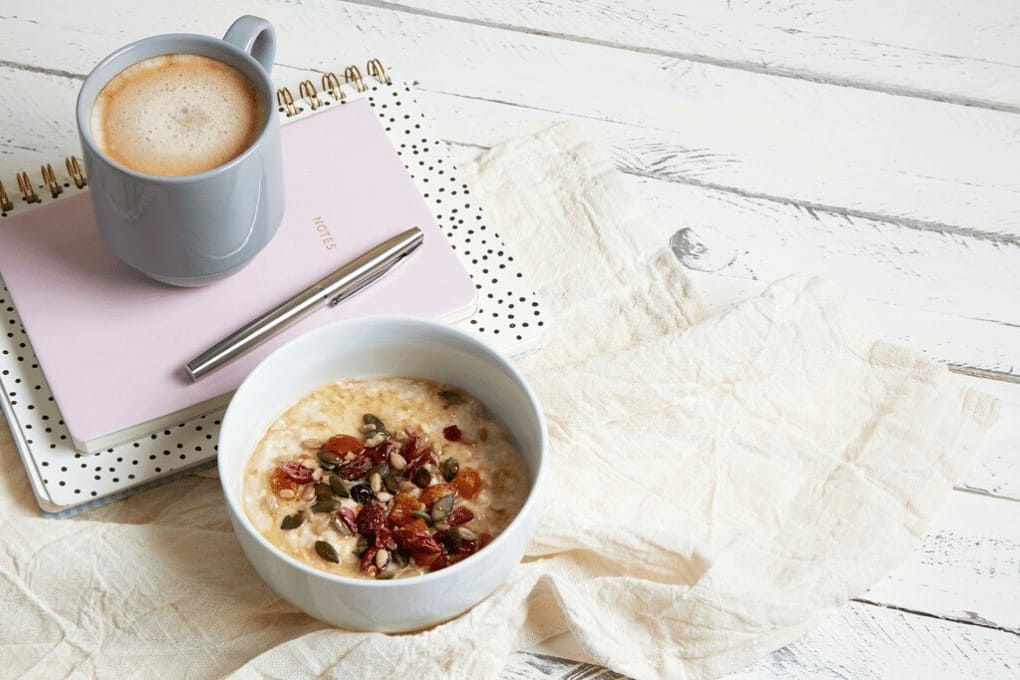
Following a routine has really simplified my life! Having my days planned and scheduled in advance has made it easy to get everything else in order.
Whichever idea seems like a good fit for you, I suggest starting right away.
#2 – FIND A PLANNING SYSTEM THAT WORKS FOR YOU
Don’t mistake this tip for a paper planner!
The point here is to find a system that you, personally, will keep up with.
It took me years of trying to finally realize that paper planners work best for me. I just don’t use my phone often enough to keep up with a digital planner or to-do list. As a busy mom, my phone usually gets shoved in my coat pocket or dropped in my purse. And I rarely look at it unless I have some downtime. I’ve come to realize that it’s more distracting for me to check my schedule on my phone compared to opening a simple planner on my kitchen counter.
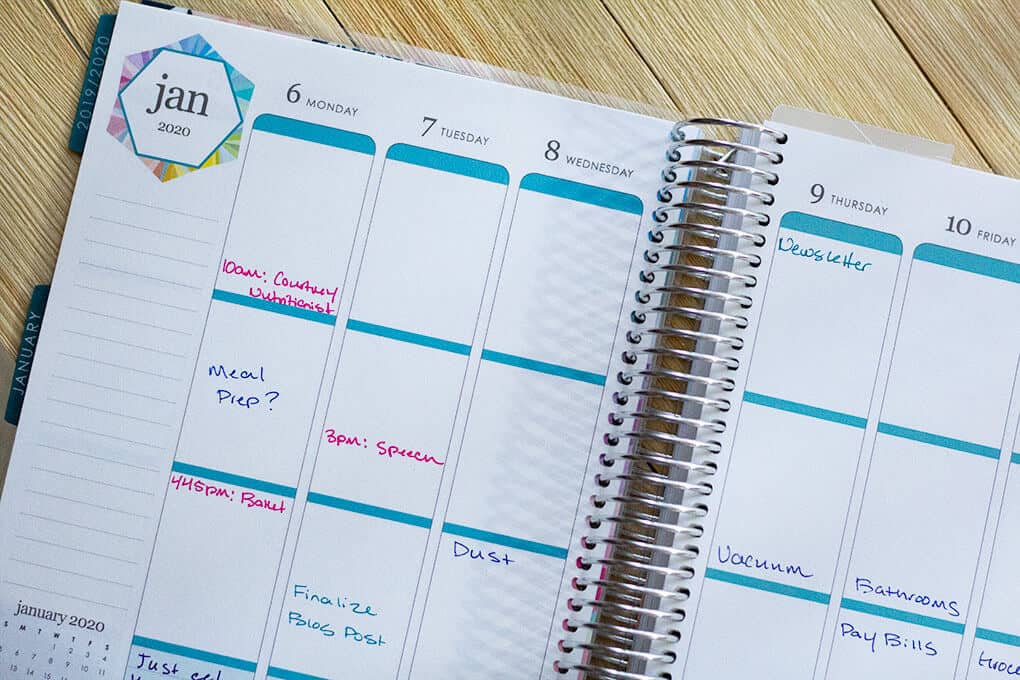
Over the years, I’ve tried every task management system and to-do list app, plus at least 5 different paper planners.
If you’re a busy woman with a dozen different things going on, I definitely suggest a paper planner.
My personal favorite is the Erin Condren Life Planner.
{Update – June 2020} I can no longer support and recommend the Erin Condren line of planners after her inconsiderate and selfish actions involving the BLM movement. For now, I have purchased a planner by a brand named Sugar Paper. They have a very high-end look but a budget-friendly price! 🤩 I will let you know how I like it as the month goes on.
You might find that you prefer digital, and that’s okay! Find what works for you and STICK WITH IT!
Some things to note:
- Your planning system needs to evolve with you.
- It will never be a one and done situation. In order to make it work, you must commit to weekly planning.
- You don’t have to follow the latest fads if that’s not your thing. If you don’t like stickers, don’t use them!
- It might take you a while to find a system that’s right for you. So don’t give up!
When you’re first starting out, play around with paper and digital to see what you like best.
And don’t assume that you need to schedule something in your planner just because you have an empty time slot staring you in the face. If your planner is too rigid, you may end up giving it up altogether. So use any empty time slots to relax!
Planning your days, weeks, months, and years will help you stay on top of the chaos. Which in turn, will help you organize your life!
#3 – WRITE DOWN YOUR 3 MOST IMPORTANT TASKS BEFORE BED
The best way to make use of your planning system is to plan the next day’s 3 most important tasks before you go to bed.
By choosing your top 3 tasks, you’ll save valuable time because you won’t have to spend time deciding what to do.
If you work outside the home, you can create two lists – for work and for home. Or you can consolidate your work and personal tasks into one list. Whatever floats your boat.
All that matters is that you do it at night before you go to bed and avoid waiting until the day of.
When I don’t do this, I spend too much time on tasks that don’t really make a difference in the long run. Sure, doing the dishes and catching up on laundry is important. But scheduling a doctor’s appointment and getting your oil changed makes a bigger difference in the grand scheme of things.
I plan for the week on Sunday nights.
But things change from day-to-day. I might have planned to get my oil changed on Thursday, but if one of my kids ends up with a fever, leaving the house is out of the question.
That’s why choosing my top 3 tasks every evening is so critical. Regardless of what I originally planned, my top 3 tasks take precedence.
So are you ready to start focusing on your top 3 daily tasks?
All you need is a sheet of paper, any kind will do. Or you can go the extra step and download the To-Do List Bundle. There’s a daily planner with space for your most important tasks!
Every night before you go to bed, decide on 3 things that you absolutely need to do the next day. Easy peasy!
Join the FREE Winter Declutter Party
And clean up 5 cluttered hot spots over 5 days. You’ll also learn why your home won’t stay organized, how to use habit stacking to clear your clutter, and what to do when you feel too overwhelmed. Click below to sign up for free. 👇
#4 – GET IT ALL OUT OF YOUR BRAIN
Do you frequently feel frazzled or have trouble remembering things? It could be because your brain is too full.
One of the single best things that I’ve ever learned is that our brains are not meant for remembering things. We have so many memories floating around in our brain that there’s really no room left for to-do’s, appointments, and miscellaneous tasks.
When “buy milk” pops into your head in the morning, there’s a pretty good chance you’ll forget about it before you head home from work. Especially if you already have 15 other tasks clogging up your memory.
There’s a couple of different ways that you can prevent this:
- Stick to one system and write down what you need to do right when it comes to mind.
- Try to avoid having multiple post-it notes scattered everywhere. Your desk, your purse, your bathroom mirror, etc.
- If you DO have notes strewn all over the place, schedule a time every week to consolidate them into one place.
One thing that has really worked for me is a brain dump.
When you’re feeling particularly stressed, take a minute to slow down and perform a brain dump. You can do this on your mobile device, but I’ve found that it’s a lot more effective when I write it down.
Here’s how to perform a brain dump:
– Grab a pen and a blank sheet of paper
(Or download the To-Do List Bundle and use the included brain dump section!)
– Set a timer for 15 minutes
– Start jotting down anything and everything that comes to mind!
Once you have everything out of your head and on paper, you’ll have one simple list of everything that’s on your plate and everything you’ve committed to.
I usually add my brain dumps to my master to-do list or my weekly planner. Having a clear head enables me to focus more clearly and make better decisions.
You might be wondering how getting everything out of your head can help you organize your life? By performing frequent brain dumps, you will have more clarity and freedom to focus on the things that truly matter.
With a clear head, it will be easier to figure out what you need to focus on.
#5 – KEEP A MASTER TO-DO LIST
A master to-do list is a great way to organize your life!
Ever since I started using one, I’ve been able to easily juggle multiple appointments, extracurricular activities, home projects, and even this blog.
And it’s so simple! The very first time I created one, I did so directly after my first brain dump.
After you finish your brain dump, scan through, and highlight any tasks that you want to get done sometime in the next few months.
And then add those items to a dedicated master to-do list.
It really is that simple!
But there are a few things to remember in order to make your master list successful:
Stick with one system for all your lists
Whether you decide to use a paper planner or a task-management app, keep with it! The worst thing you could do is switch from one to the other. You want to have a complete list so you can access it anytime you need to.
It can be as long or as short as you want
You might want to keep your list nice and tidy; only choosing to add more once you’ve crossed some items off. But that doesn’t always work for me. Sometimes I’m in a season of life where I’m only able to focus on the daily tasks and I can barely make a dent in my master list.
Use a separate list for anything you don’t want to do right away
This is called a someday/maybe list. It’s a list specifically meant to store ideas that you might want to do someday. If you want to visit Disney World sometime in the next few years, add that to your someday/maybe list. Save room on your master list for more pressing matters.

Related Post: Stop Wondering How to Get Organized
#6 – SET GOALS
Once I made a point to start setting goals, I finally felt like I had a purpose.
Instead of aimlessly floating from day to day, my days had direction. And it was a lot easier to find the motivation to work on the things that I wanted to.
If you’ve never set goals before, it can seem a little confusing. There are many different types of goals. And even more goal-setting planners and worksheets.
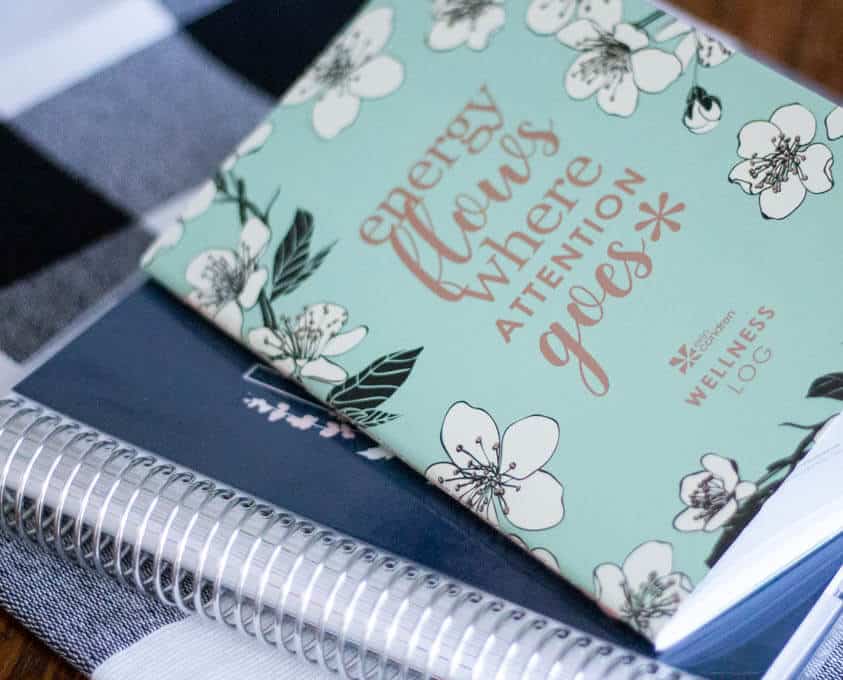
Where to begin setting goals:
– Choose something that you want to work towards
Anything you want!
– Dig deeper and write it down
While setting a goal to lose weight is effective, you can get a lot more specific than that.
Think about how you plan to lose weight. Through exercise or eating healthy? How often will you be working out? And how often will you check in with yourself?
Make sure you write it all down. Keep it in a dedicated notebook, a planner, or task management system.
– Consider any obstacles
No matter how strategic you are, there will always be roadblocks that come up and stand in your way.
Instead of letting them happen, plan for them in advance. Take some time to think about any possible obstacles that might prevent you from achieving what you want. And then decide how you will overcome them.
– Take action
The final step is to take action on your goals! I like to break my goals down into monthly and daily action steps. And then I add them to my planner.
For example, one of my 2020 goals is to lose weight. (I recently got on the scale and was shocked to see that I’ve gained 30lbs since last summer!)
I wrote down that I want to lose approximately 1lb a week by eating out less, drinking less pop and more water, and practicing yoga.
Potential obstacles include the convenience of eating out and not having cold water. I plan to avoid these roadblocks by making sure to meal plan every week and cooking chicken breasts in the Instant Pot ahead of time. I’m also going to make sure we have plenty of bottled water.
If you’re looking to organize your life, setting goals is a great place to start. You can even set goals to work on some of the tips from this post!
#7 – PREPARE FOR THE COMING WEEK
Depending on your lifestyle, this will look different for everyone.
Some people like to focus on a weekly reset, while others perform a weekly review or a weekly planning session.
I actually spend some time doing all three. Here’s how that looks:
Weekly reset
Think of the weekly reset like you are resetting your home to prepare for the coming week.
On Sunday afternoon, I start my weekly reset by washing all the sheets and blankets. This gives me fresh sheets for the week and it also ensures that my preschooler has a clean blanket to take back to school on Monday. (Before I started doing this, I always forgot to wash his blanket and was scrambling to find a clean one to put in his backpack.)
While they are in the washer, I finish folding any laundry that was left out over the weekend. I also make sure that my kid’s school clothes are folded and put away.
Then, I tidy up areas of the house that were missed throughout the week. Next, I clean out the fridge and empty the trash cans, empty my kid’s backpacks and wipe down their lunch boxes. And finally, I add clean sheets to the beds and fold the smaller throw blankets.
Estimated Time: 2 hours
Weekly review
My weekly review is taken from David Allen’s Getting Things Done. In a nutshell, it’s when you process all the information that has been set aside from the previous week.
This could be digital information, such as voicemail, text messages, and email. But equally important is the physical info that tends to be easily forgotten – appointment cards, invitations, mail, incoming paper, etc.
The process is fairly simple – I sort all unopened mail, shred junk mail, and place bills in my budget binder. Next, I check all of my messaging services, my wallet, the bottom of my purse, and any miscellaneous paper piles that have accumulated around the house. I also sort through any paper that was in my kid’s backpacks.
I go through all the information and take note of any important dates, appointments, or reminders that I need to take care of. Then, I add everything to my weekly planner. If it’s not relevant to the coming week, I add it to Google Calendar.
Finally, I make sure to file anything that needs to be saved; either in my file cabinet or my kid’s school binders. Each of my kids has their own binder. There are separate sections for classroom info, general school info, and artwork.
Estimated Time: 30-45 Minutes
Weekly plan
By now, my weekly plan is pretty much complete. After adding important dates to my weekly planner, I check Google Calendar for any upcoming appointments I may have forgotten about. Then, I glance at my to-do list and choose a few things to focus on during the week.
Estimated Time: 10 Minutes
And that’s my Sunday routine!
One of the best things you can do to organize your life is to always stay one step ahead of the coming week. By planning ahead, you can rest assured that your schedule and your home are under control. With a clear head, you’ll be able to focus on what truly matters, as opposed to stressing about what needs to be done next.

Do I follow this routine every single week? Of course not! I’m only human… Sometimes I just don’t feel like doing it. But having this system in place makes it super easy to pick back up the following week. It takes a little longer when I’ve missed a week. But knowing that everything has a specific place in my schedule means I don’t have to worry about it. And that’s a great feeling!
#8 – STAY ON TOP OF EMAIL
I know that managing your email inbox can seem like a daunting task, especially if you have thousands of unread messages.
But there is hope! If your inbox is completely out of control, you can file email bankruptcy and start fresh.
Once you have a clean start, it’s easy to maintain your inbox!
Sound too good to be true? I thought so too! But I recently did this in Gmail, and it truly is as freeing as they say it is!
Click here to learn how to organize your inbox and maintain your email account.
And don’t worry if you don’t have Gmail! I’ve included links to the most popular email service providers, so you can bulk-delete all, no matter how many unread messages you have.
You’ll also find tips to help you easily unsubscribe from unwanted lists, create an email-processing routine, and effectively handle each type of email that comes your way.
Staying on top of your email might seem a little irrelevant. But when I fail to get back to people in a timely manner, it definitely makes me feel disorganized. And I’ll bet that I’m not the only one who feels this way.
So if you’re hoping to organize your life this year, start with your inbox.
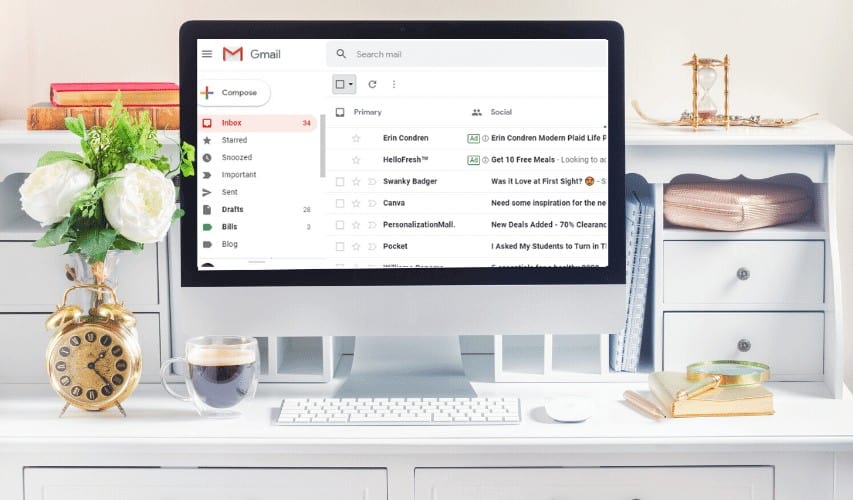
#9 – CREATE A FAMILY INFORMATION CENTER
This isn’t necessarily the same thing as a family command center, but you could certainly have both if it suits you.
I have a command center in our main hallway. It consists of a wall calendar, a bulletin board for calendars, schedules, and newsletters from school and extracurricular activities. There’s also a mail sorter, key hooks, and wall-mounted coat hooks for my kid’s backpacks.
But we also have a family information center on our fridge. There are a couple of miscellaneous DIY envelopes that hold important information like prescriptions and such.
The most important part is the two $10 whiteboards.
One of them is used for relevant information… Sometimes I write down medication doses for my kids or I jot down a few items that we need from the grocery store. It’s a lot quicker than adding the items manually to my grocery list, especially in case my husband runs to the store before our regular grocery day.
The 2nd whiteboard is used to track food that needs to be used up. And sometimes I include a few things for my husband to do, like changing the light bulb in the garage.
I decided to create a family information center since everyone in my family uses the fridge on a daily basis. Instead of having to walk to the command center just to write down something that we’re out of, I can grab the dry-erase marker and jot down “ketchup” in a matter of seconds.
During the winter when we’re all sick, there are multiple medication doses to keep track of. So it’s really nice to have that information at easy access, especially for my husband and any sitters.
It doesn’t matter if your family information center is physical or digital, as long as everyone in your house has access to it.
Here are a few suggestions:
– Use a couple of whiteboards as I do
They typically have a magnetic back so they’re perfect for adhering to a fridge.
– Use a shared family app like Cozi
Cozi has a little more functionality than a basic digital calendar. There are to-do lists, and shopping lists, a recipe box, and a family journal. There’s also the option to color-code each family member. Basically, it will keep the whole family on the same page, especially if everyone is always on the go!
It’s free to start, click here to check it out!
Often, being organized is a matter of getting your whole family on board, which isn’t always easy to do.
Dedicate one specific place for family information. Let your kids know where to put important info, whether it’s an app or a simple whiteboard.
Related post: 20 Inspiring Family Command Centers
#10 – GET YOUR HOUSEHOLD PAPER UNDER CONTROL
This is another tip that made a big difference in my life once I took the time to do it.
I used to have stacks of papers piled high on my dining room table, but now they are all streamlined and easily accessible.
I started by going through the piles of papers one at a time. I filed anything that was important and got rid of the rest.
After all of it was organized, I made a point to process all our household papers as often as possible.
Ideally, at least once a week. This is key to managing paper.
Do I consistently process all of our papers every week? Not even close. With 4 kids and health issues, sometimes I’d rather have time to myself.
If I miss a week, I’ll either go through the papers in a few days, or I’ll give myself extra time to get caught up next week. But I gotta say, having a simple routine and system for all our incoming paper is how I’m able to stay on top of it.
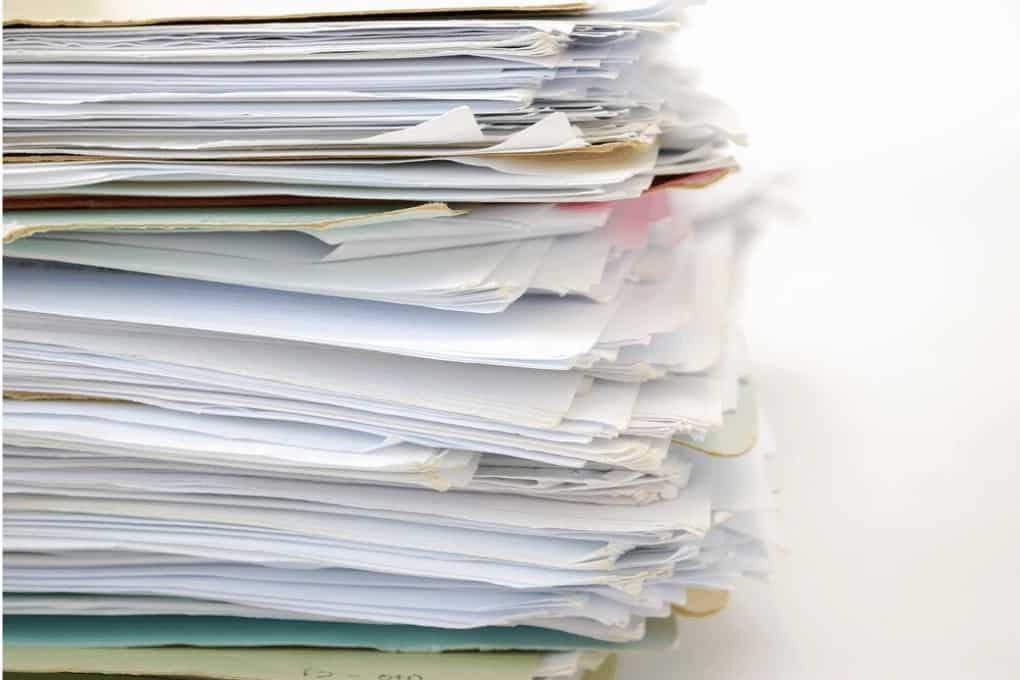
If you struggle with paper clutter, I have a blog post series dedicated to all the different types of household paper!
- How to Create an Effective Home Filing System
- Stopping the Mail at the Door
- How to Control all that Incoming Paper
- The Best Ways to Organize Daily Paperwork
I know what it’s like to feel like you’re drowning in paper. We seriously had stacks of papers all over our house.
Not only did I learn how to conquer them successfully, I learned how to organize my paper going forward so it wouldn’t happen again!
– Take note of what type of paper accumulates in your house every week
Planners, to-do lists, post-it notes, school papers, kid’s artwork, bills, unopened mail, junk mail, medical records, work information, client records, etc.
Start thinking about what type of paper you absolutely need to keep and what can be let go of.
– Remove your name from unsolicited mailing lists
This NY Times article goes into great detail on the different ways you can remove yourself from credit card offers and random magazines.
– Consider purchasing a shredder if it’s in your budget
There are a couple of neat shredders available on Amazon from $35-$60. And some budget-friendly ones for sale at Walmart.
Or you can use a local shredding company. According to Google, it’s approximately $30 for a 30 lb box of paper.
It can be hard to know what to focus on when your living space is bogged down and stressful. So if you want to organize your life, getting a handle on all the paper is an important first step.
No matter how overwhelming your paper problem, don’t skip this step!
And don’t forget to grab the mini version of The Organized Mom’s Household Binder. It will help you get a head start on organizing your important household information so you can find what you need right when you need it, save time, and reduce stress. 👇
#11 – CREATE A HOME FOR EVERYTHING
I decided to include this tip at the end because this has truly been life-changing for me.
Our house isn’t Instagram-perfect by any means, but it’s livable, and it works for our loud, boisterous family. My young kids know exactly where everything goes, which has been a big help in teaching them to be mindful of their belongings.
Even if your home is full of clutter, I recommend striving to always put your frequently-used items in the same spot.
My nightstand is a mess. There’s a couple of old Mountain Dew cans, nose spray, hair ties, earrings, and random papers. But I have a basket that holds my remote controls, glasses, headphones, essential oils, and a couple of books. So even when my nightstand is a disaster, I can easily find the important things that I need at a moment’s notice.
When our family room looks like a tornado ripped through it (as it does multiple times a day), we can tidy up in less than 15 minutes since every toy, blanket, device, and book has a dedicated spot.
By streamlining your home, you’ll inevitably make your life easier and therefore, more organized.
READY TO ORGANIZE YOUR LIFE?
This isn’t a comprehensive list of all the ways to organize your life. But it is a good starting point!
I know it’s a lot of steps. But you don’t have to work on all of these tips right away!
It took me the better part of 2 years to focus on most of these items consistently:
- Follow a routine
- Find a planning system that works for you
- Write down your 3 most important tasks before you go to bed
- Get it all out of your head with a brain dump
- Keep a master to-do list
- Set goals
- Prepare for the coming week
- Stay on top of your email
- Create a family information center
- Get your household paper under control
- Create a home for everything
A few of these tips can be rolled into one.
When you find a planning system that works for you, you can also use it to keep track of your to-do list, your top 3 tasks, and your brain dumps. You can even fill in your routine on a weekly planner.
So pick just one to start with.
Practice it for as long as you need until you get used to it. When you feel like it’s made a difference in your life, try moving on to the next tip.
And if something doesn’t seem like a good fit for you, then just skip past it!
Start organizing your life now and you’ll end up with more freedom in the long run. And don’t forget to grab a free mini version of The Organized Mom’s Household Binder. It’s the perfect way to keep track of all your important household info and begin to organize your family. 👏
Related posts
19 Organizing Tips That Will Streamline Your Home and Your Life
Stop Wondering How to Get Organized
4 Routines That Will Simplify Your Life
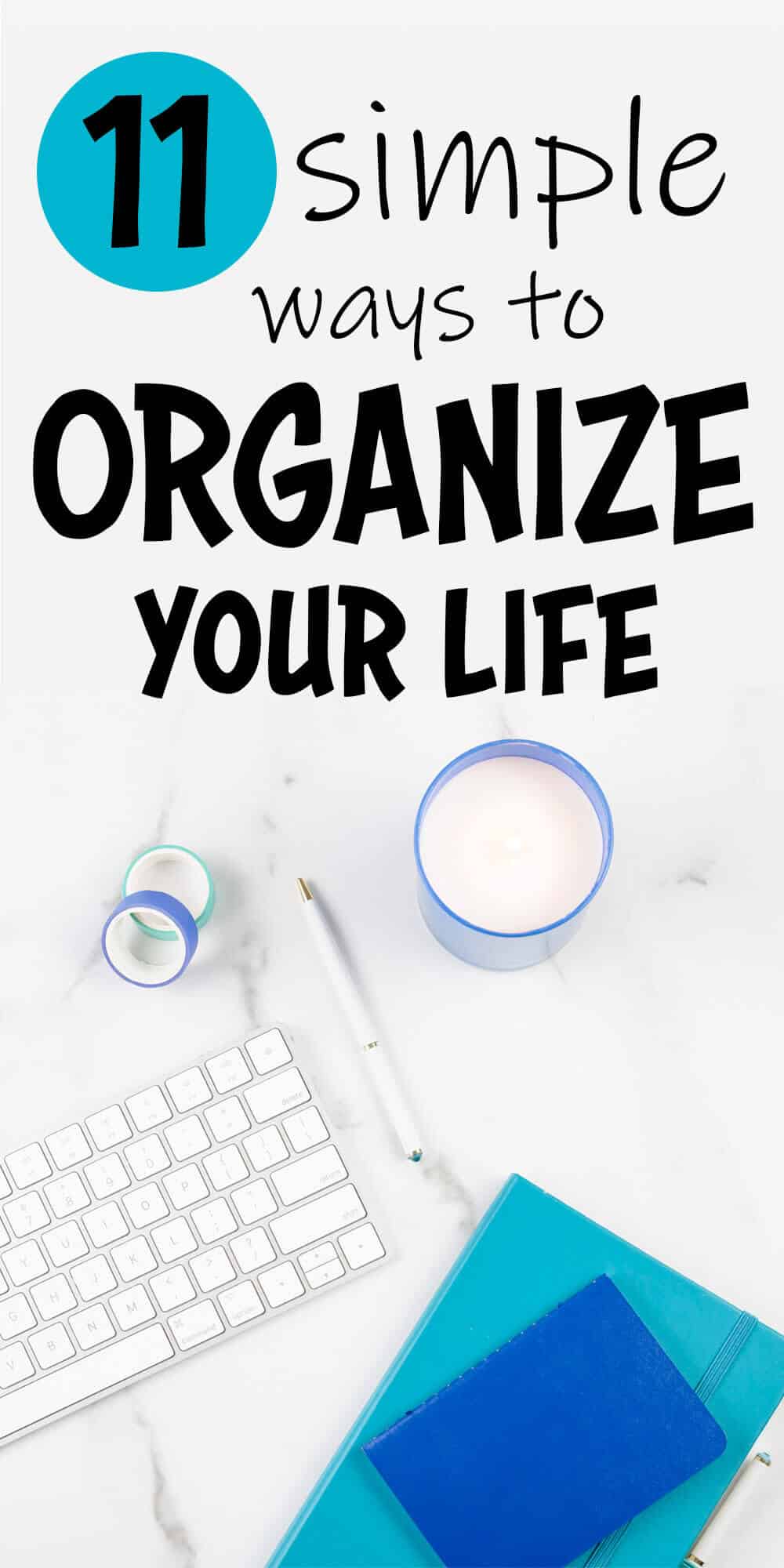
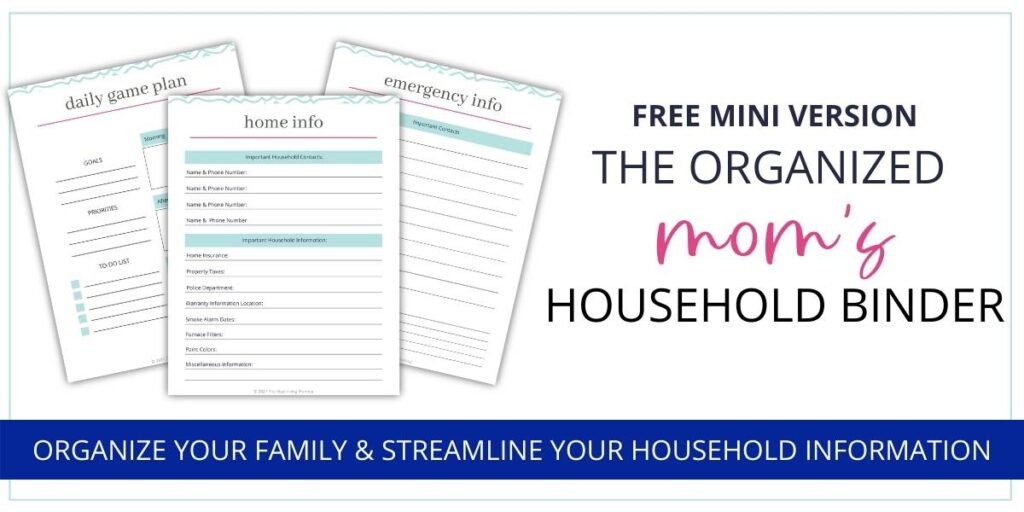


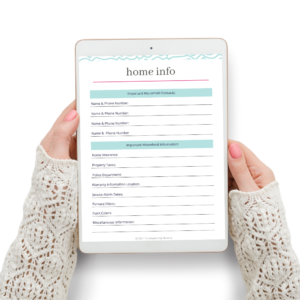

Leave a Reply
You must be logged in to post a comment.